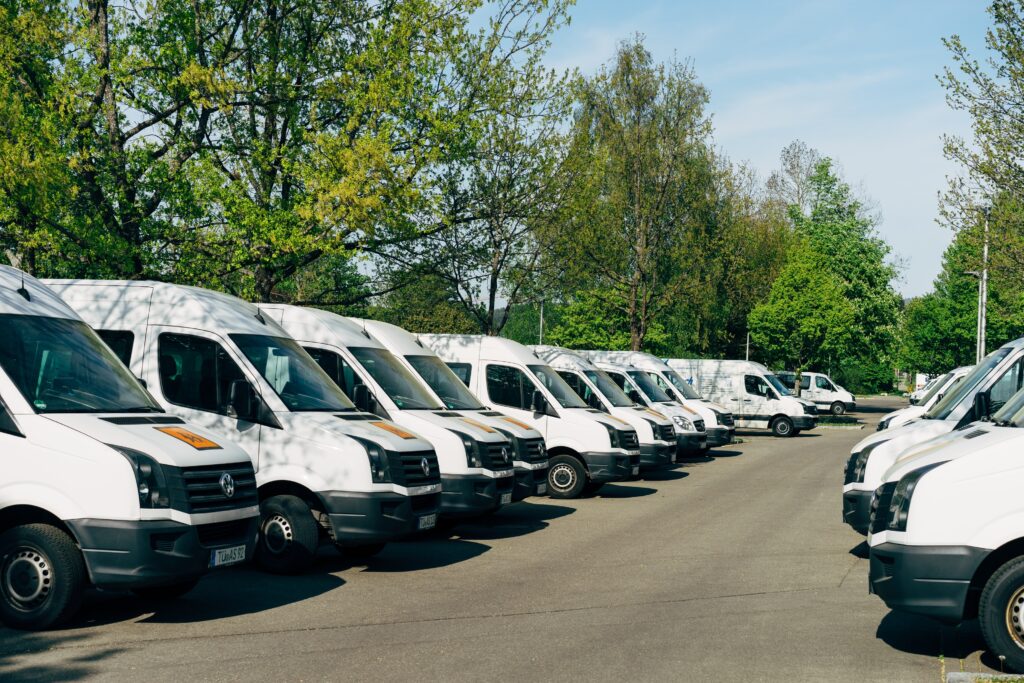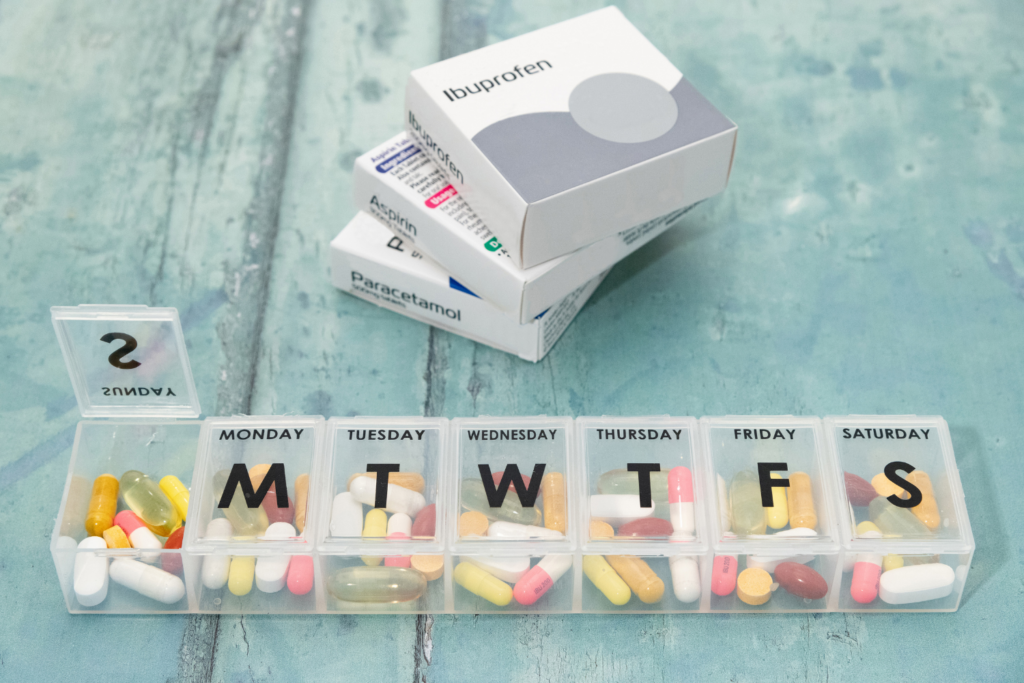
The 2022 traffic and crash report for New Jersey has made it a ‘Garden State’ in name only. Motorists driving through its roads, especially Route 4 in Fort Lee and Interstate 95, know what it’s like to live life on the slow lane.
With many such bottlenecks, it is hardly any wonder that the New Jersey Division of Highway Traffic Safety (DHTS) revealed in the state’s Annual Report 2022 that there was a 16% rise in road crashes in 2021 compared to the previous year. Commercial truck accidents also increased by 17%, and 72% of the fatalities in these accidents were occupants of other vehicles.
Such figures only reiterate the fact that commercial auto insurance policy is a must-have for all kinds of businesses. However, New Jersey’s motorists can scarcely find solace as commercial auto rates continue to rise in the state.
In this article, we will discuss the ongoing ‘rate fatigue’ crisis of the New Jersey commercial auto division and how insureds (especially small businesses) can deal with the rising cost of insurance claims.
Contents
Why are Commercial Auto Insurance Rates Steadily Rising?
Listed below are the major factors driving New Jersey’s commercial auto insurance rates –
1. Smartphones Getting Smarter Still
Old-generation flip phones and the modern smartphone are worlds apart in terms of technology. While technology emerged to make lives easier, it has certainly complicated things for the auto insurance market.
According to Sophie Shulman, the Deputy Director of the National Traffic Highway Association, the temptation of notification or text is too strong to resist for many drivers (even and especially during work hours). The telematics company, Cambridge Mobile Telematics (CMT), released a report stating that distracted driving crashes increased by 23% since 2020.
A significant number of crashes were caused due to smartphones (even hands-free devices), with fatalities rising by 1000 and the US economy suffering $10 billion in damages by 2022. As for the state of New Jersey, distracted driving due to smartphones is the number-one cause of fatal crashes and collisions.
As tech keeps advancing, motorists are “texting first and driving second.” This epidemic makes it difficult to attribute the accident to the liable party, and drivers refusing to admit their fault are causing the system to bear the brunt of it.
2. Worsening Crash Severity
According to the American Trucking Association, commercial trucks (even semi-trucks) are responsible for carrying 72.6% of total freight in the United States. This percentage does not include vans and other vehicles used by small businesses.
By that number, there are more commercial vehicles on the roads than ever before. By their design and size, large trucks and trailers are capable of causing deadly crashes and collisions, especially when other drivers do not keep clear of their blind spots and follow safety rules.
As of 2023, there are nearly 1291 trucking companies in New Jersey running at least six-vehicle fleets. Besides that, NJ is also home to nearly 242 car rental agencies running fleets of 20 or more taxi cabs.
With so many vehicles on the roads, it is no wonder that the frequency and severity of crashes have considerably increased, with SR-129 and I-676 being highly dangerous interstates. Not only does commercial car insurance NJ surcharge after a crash (particularly a fatal one), but the rates remain affected for at least three to five years following the incident. The exact period depends upon the carrier and the severity of the impact.
3. Legalization of Cannabis
There was a time when medical and recreational use of cannabis (weed) was illegal. Ever since decriminalization, marijuana has gotten cheaper. This has made it easier for people of all income classes to easily have access to this drug.
The National Institutes of Health found that cannabis is the most trafficked and abused drug of all. It also revealed the increased risk of road accidents due to driving impairment associated with cannabis. This problem persists across the US, but to what extent is currently unknown.
A recent Assembly Bill was passed early this year which requires New Jersey State Police to release annual reports on crashes caused exclusively due to marijuana. This was done to understand whether recreational marijuana among commercial and private drivers is leading to fatal crashes. However, one such case was reported recently where a woman from Toms River (under the influence of cannabis) crashed her vehicle into three others, leaving two people dead.
4. Rising Repair Costs due to Technical Complexities
Modern vehicles, both cars and trucks, are not as simple as to suffer a fender replacement after a crash. Advanced tech used in vehicles, including ABS, park assist, collision avoidance sensors, etc., are highly complex and radically alter the costs of commercial insurance claims.
Gone are those days when software was just a part of an automobile. Today, the software determines the vehicle’s value. At least 40% of a vehicle’s total cost may be attributed to software, but the same is expected to reach 50% by 2030.
Thousands of dollars are spent on replacing such crucial systems. Not only that, but a simple cracked windshield takes nearly $1500 for replacement, something which only cost around $200 a decade ago. The price hike is due to in-built tech like windshield-mounted cameras for adaptive cruise control and automatic braking.
However, according to David G. Sayles Insurance Services, the cost of any commercial auto insurance policy is not just determined by the vehicle and its advanced tech (though they play a significant role) but also by factors like –
- Driving reports and accident records
- The company’s commercial auto insurance claim history
- The company’s NJ location
- The number of miles the vehicle logs every year
- The gross weight of the vehicle
- Types of vehicles the business runs
5. Inflation
This factor is an interesting one because New Jersey’s inflation rate is currently the lowest in the past two years. Still, the cost of living and commercial auto insurance rates are rising. The Consumer Price Index for auto bodies hit its all-time high in September 2022 – a staggering 11%.
This means that insurers are required to pay higher dollar amounts for accidents insured before the inflationary hit. Not only that but the frequency of auto accidents also increased compared to the pandemic years. Remote work practices and economic downturn had reduced the number of vehicles hitting the roads, a scenario that has reversed ever since.
Earlier, the outcome was favorable in light of fewer claims despite higher losses, but the market is unsustainably burdened now. To maintain profitability levels, insurers have to increase commercial auto insurance rates.
6. More Expensive Cargo
Since the emergence of highly advanced technologies, the freight commercial vehicles carry are also expensive, requiring larger insurance premiums. These include electronic items and costly medicines. If a commercial vehicle carrying such expensive cargo tips over, the goods are usually damaged beyond repair, and the insurer has to pay for the replacement.
It is equally true that such items easily tempt thieves, and if the company does not have comprehensive coverage, there will be no replacement. In any case, the higher costs of cargo are another reason why commercial auto insurance rates are rising in New Jersey.
Besides these factors, another rising concern is the increasing litigation settlement values (nuclear jury verdicts) for commercial vehicle accidents. Though the final amounts may range between a few thousand dollars to millions, the latter value has become more consistent in recent settlements. For instance – A trash-hauling company ended up paying $2.5 million to a driver injured by one of its tractor-trailers in Essex County.
The settlement amounts are usually higher in cases where bodily injuries are involved. Since these lawsuits can take years to resolve, insurers often underestimate the eventual losses initially.
The third quarter of 2022 has been the 45th consecutive quarter to witness a rise in commercial auto insurance rates. It is time to proactively deal with the problems involved to better manage insurance risks for commercial fleets.
1. Proper Safety Programs
In many cases, the company’s drivers are inadequately trained or at least uninformed about the safety policies and procedures. For instance – the Federal Motor Carrier Safety Administration (FMCSA) lays down certain strict rules when it comes to commercial vehicle driving (for both drivers and employers).
Businesses must ensure they run periodic safety programs to address critical issues like distracted driving. Driver scorecards and other incentives can be used to encourage drivers to drive safely. Safety programs combined with telematics can become a powerful way to mitigate auto rate risks.
2. Telematics
Commercial auto insurance is seen as one of the most challenging markets in the US, including New Jersey. It is believed that advanced tech solutions installed within commercial vehicles may help reduce loss ratios, thereby lowering rates over the years.
Telematics or safety technology that uses GPS and data analytics to record and analyze data like driving history, driver habits, geographic footprint, etc., is becoming widely popular. By monitoring the vehicle environment both within and without, this technology helps in determining the liable party during accidents (reducing the risk of nuclear jury verdicts).
Some of the common things telematics records include vehicle health, harsh braking, abnormal acceleration, speed, and more. Companies can also look into claim trends and deal with losses over time.
Will Self-Driving Vehicles Impact the ‘Rate Fatigue’ Crisis?
Self-driving or autonomous vehicles were supposed to take over the roads by now, but some of the roadblocks include inclement weather conditions, public acceptance issues, problems adapting to different locations’ road signage, and left turn decisions amid oncoming traffic.
On a scale of one to five, where one stands for fully traditional vehicles on the roads and five stands for fully autonomous vehicles, the world is somewhere between one and two. Researchers do express their doubts regarding fully autonomous vehicles ever becoming a reality.
However, assuming that does happen, McKinsey states that Advanced Driver Assistance Systems (ADAS) used in these vehicles will increase safety. It could reduce the number of accidents by 15% by 2030. As the frequency of accidents decreases, fewer claims will be filed.
As a result, commercial auto insurance premium prices will see a dip. Also, IoT-enabled features for theft protection like ‘kill-switch’ will reduce the need for theft protection coverage. This will further lower insurance rates.
The Bottom Line
According to Allied Market Research, the commercial auto insurance market is projected to reach $307.10 billion in 2030 as compared to just $128.44 billion in 2020. Every business running vehicles as a part of their work must ensure they get commercial auto insurance coverage.
This is crucial because New Jersey State requires all motorists and companies to buy a minimum insurance policy for personal and business use. Even if a vehicle has been insured under a personal auto insurance policy, no coverage will be provided in case of mishaps during work hours.
The company, therefore, is responsible for covering all its vehicles under a commercial auto insurance policy purchased from a reliable agent. Besides the price point, factors like the company’s customer service, reputation, and expert advice are crucial to ensuring you get a reliable policy that best meets your needs.




